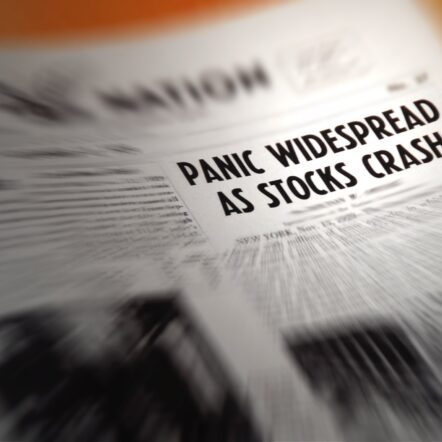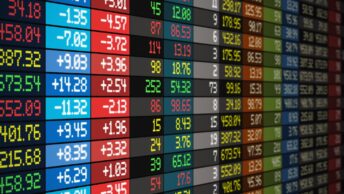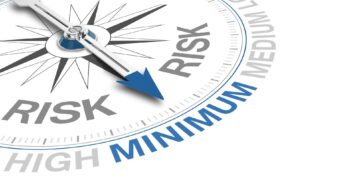The possibility of a stock market crash is always real and terrifying. A stock market decline can happen quickly, and the consequences can be profound.
A crash is possible if there’s a significant drop in stock prices. There’s no specific definition for a stock market crash. The term applies to any occasion when stock market indexes lose over 10% of their value in a short amount of time.
Some of the biggest crashes were unexpected and occurred without warning or stock market forecasts from financial experts.
Here’s a brief look at four of the biggest stock market crashes in history.
1. The 1929 Stock Market Crash
The worst stock market crash began in 1929 and was the catalyst for the impending Great Depression. This crash ended the stock market boom of the Roaring Twenties.
From August 1921 to September 1929, the Dow Jones Industrial Average rose 63 points. It began a decline from its peak on September 3rd. The decline accelerated the following month before tumbling 13% on Black Monday and another 12% on Black Tuesday.
By mid-November, the stock market had declined over 20% and continued its drastic descent until it bottomed out at 89% below its peak. The market didn’t rebound fully until 1954.
2. Black Monday Crash of 1987
On Monday, October 19, 1897, the Dow plunged 22%. This day marked the most significant decline in a single day in the history of the stock market. By early November 1987, most major stock market indexes fell to 20% of their previous value.
A series of events, including computerized trading, a growing trade deficit, and tensions in the Middle East, precipitated the crash. The Black Monday crash was more of a programmatic trading problem than an economic problem, and the stock market recovered quickly.
The Dow recouped its losses by September 1989.
3. Dot-Com Bubble of 1999 to 2000
In the late 1090s, internet-based stocks had a sharp rise. The result was a tech-dominated NASDAQ Composite Index.
It surged more than 5,000 points in 2000. Then, in early 2001, the bubble burst. On March 10th, the NASDAQ peaked and then plummeted 76.81% to a low of 1,139.90 points by October 4, 2002.
Overvalued internet stocks were the primary cause. Investors poured money into the tech sector, driving up the valuations of dot.com companies.
The dot.com bubble burst when the Federal Reserve tightened monetary policies. It was another 15 years before the NASDAQ rose to its 2001 peak.
4. Coronavirus Crash of 2020
The most recent crash occurred in 2020 as Covid spread around the globe. The week of February 24th, the Dow and S&P dipped 11% and 12%, respectively.
This marked the biggest decline since 2008. On March 12th, the Dow declined 9.99%, the most significant one-day drop since Black Monday. This was followed by another 12.9% drop on March 16th.
Unlike slower crash recoveries, the market rebounded by May 2020 due to an enormous surge of U.S. government stimulus money, slashed interest rates, and a $2.2 trillion dollar aid package.
Biggest Stock Market Crashes in History
Learning about the biggest stock market crashes in history offers several lessons for today’s investors. Most crashes followed a debt-fueled boom; perception often drives consumer mood and actions.
Before you invest, it’s wise to study the market and analyze the risks. Daily YouTuber Michael Silva documents the ups and downs of wealth building through a technical analysis lens of the stock market.
Be sure to check out Michael’s podcast and financial blogs.







